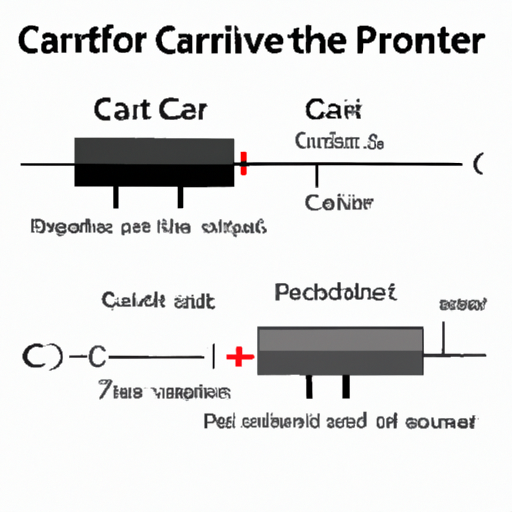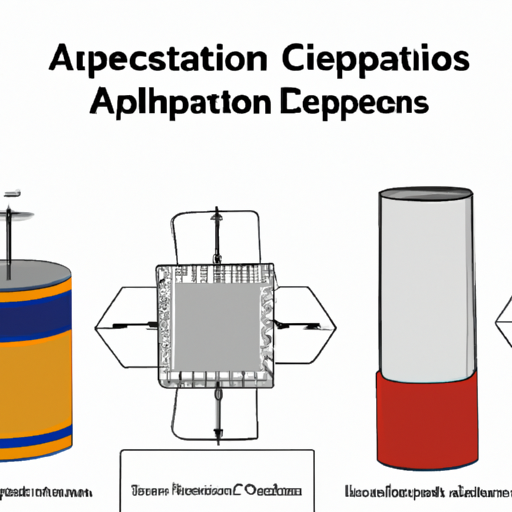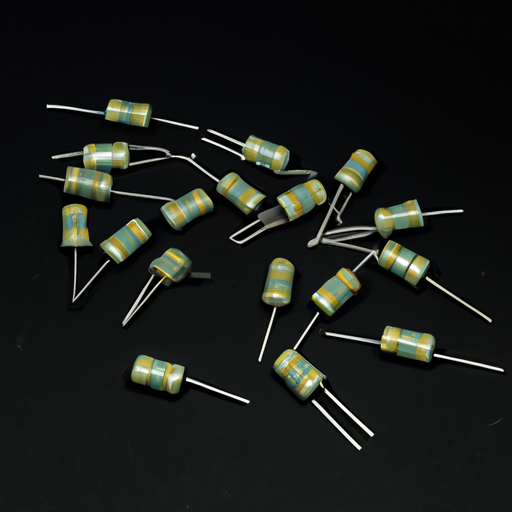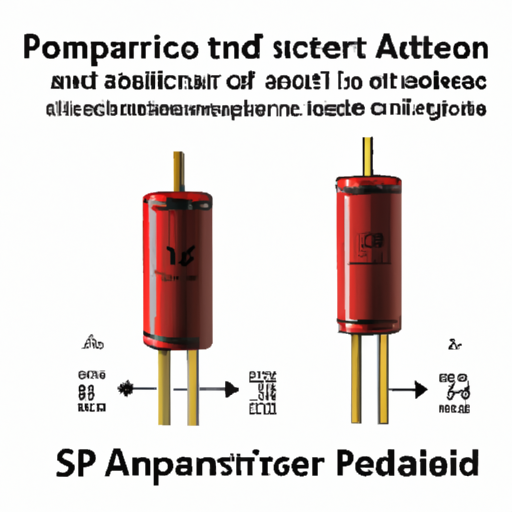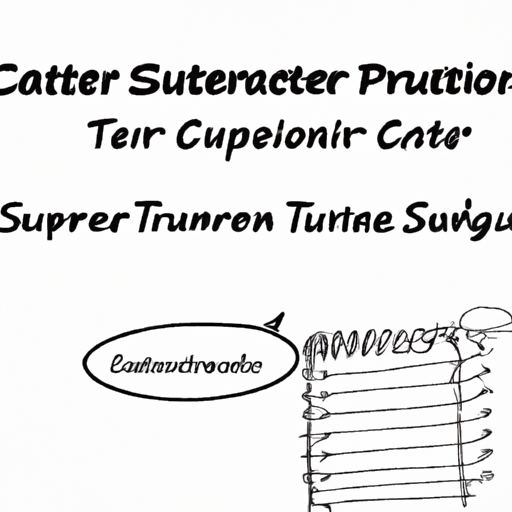What are the product characteristics of the capacitor principle?
Product Characteristics of the Capacitor Principle
I. Introduction
Capacitors are fundamental components in electrical engineering, playing a crucial role in various applications ranging from power supply filtering to energy storage systems. These devices are essential for managing electrical energy in circuits, and understanding their product characteristics is vital for engineers and designers. This blog post delves into the capacitor principle, exploring its basic structure, types, key characteristics, performance metrics, and applications.
II. Basic Principles of Capacitors
A. Structure of a Capacitor
A capacitor typically consists of two conductive plates separated by an insulating material known as a dielectric. The arrangement allows the capacitor to store electrical energy in the form of an electric field when a voltage is applied across the plates. The plates are usually made of conductive materials such as aluminum or tantalum, while the dielectric can be made from various materials, including ceramic, plastic, or electrolytic solutions.
B. How Capacitors Store Energy
When a voltage is applied, electrons accumulate on one plate, creating a negative charge, while the other plate loses electrons, resulting in a positive charge. This separation of charge creates an electric field between the plates, which is the basis for energy storage in capacitors. The amount of energy stored in a capacitor can be calculated using the formula:
\[ E = \frac{1}{2} C V^2 \]
where \( E \) is the energy stored in joules, \( C \) is the capacitance in farads, and \( V \) is the voltage across the capacitor.
C. Capacitance Explained
Capacitance is defined as the ability of a capacitor to store charge per unit voltage, measured in farads (F). The capacitance value is influenced by several factors, including the surface area of the plates, the distance between them, and the type of dielectric material used. The relationship can be expressed by the formula:
\[ C = \frac{\varepsilon A}{d} \]
where \( C \) is the capacitance, \( \varepsilon \) is the permittivity of the dielectric material, \( A \) is the area of one of the plates, and \( d \) is the distance between the plates.
III. Types of Capacitors
Capacitors come in various types, each with unique characteristics and applications. Understanding these types is essential for selecting the right capacitor for a specific application.
A. Electrolytic Capacitors
Electrolytic capacitors are polarized components that offer high capacitance values in a compact size. They are commonly used in power supply applications due to their ability to handle large amounts of charge. However, they have a limited voltage rating and can be sensitive to reverse polarity.
B. Ceramic Capacitors
Ceramic capacitors are non-polarized and known for their stability and reliability. They are widely used in high-frequency applications due to their low equivalent series resistance (ESR) and high-frequency response. Ceramic capacitors are available in various classes, with Class 1 capacitors offering better stability and Class 2 capacitors providing higher capacitance values.
C. Film Capacitors
Film capacitors utilize a thin plastic film as the dielectric. They are known for their excellent stability, low self-inductance, and high insulation resistance, making them suitable for audio and high-frequency applications. Film capacitors are also non-polarized, allowing for flexible circuit design.
D. Tantalum Capacitors
Tantalum capacitors are known for their high capacitance-to-volume ratio and reliability. They are often used in applications where space is limited, such as in portable electronics. Tantalum capacitors are polarized and can be sensitive to voltage spikes, requiring careful consideration in circuit design.
E. Supercapacitors
Supercapacitors, or ultracapacitors, have extremely high capacitance values and are used for energy storage applications. They bridge the gap between traditional capacitors and batteries, offering rapid charge and discharge capabilities. Supercapacitors are ideal for applications requiring quick bursts of energy, such as in regenerative braking systems in electric vehicles.
IV. Key Product Characteristics of Capacitors
When selecting capacitors for specific applications, several key product characteristics must be considered:
A. Capacitance Value
The capacitance value is a critical specification that determines how much charge a capacitor can store. It is essential for engineers to consider the tolerance of the capacitance value, as variations can significantly impact circuit performance. Capacitors are available in various capacitance values, ranging from picofarads (pF) to farads (F).
B. Voltage Rating
The voltage rating indicates the maximum voltage a capacitor can handle before breakdown occurs. Engineers must ensure that the voltage rating exceeds the maximum voltage in the application to prevent failure. It is also important to consider safety margins, as operating a capacitor near its voltage rating can lead to reduced lifespan and reliability.
C. Equivalent Series Resistance (ESR)
ESR is a measure of the internal resistance of a capacitor, affecting its efficiency and performance. A lower ESR is desirable, especially in high-frequency applications, as it minimizes energy loss. High ESR can lead to increased heat generation and reduced performance in power supply circuits.
D. Temperature Coefficient
The temperature coefficient indicates how the capacitance value changes with temperature. Different types of capacitors have varying temperature coefficients, which can affect their performance in temperature-sensitive applications. For example, ceramic capacitors may have a positive or negative temperature coefficient, impacting their capacitance stability over a range of temperatures.
E. Lifetime and Reliability
The lifespan of a capacitor is influenced by factors such as operating temperature, voltage stress, and ripple current. Understanding these factors is crucial for ensuring reliability in long-term applications. Manufacturers often provide specifications regarding the expected lifetime of capacitors under specific operating conditions.
V. Performance Characteristics
In addition to product characteristics, capacitors exhibit various performance characteristics that can impact their effectiveness in circuits.
A. Frequency Response
Capacitors exhibit different impedance characteristics at various frequencies. Understanding the frequency response is essential for applications involving AC signals, as it affects how capacitors behave in circuits. The impedance of a capacitor decreases with increasing frequency, making them effective for filtering high-frequency noise.
B. Leakage Current
Leakage current refers to the small amount of current that flows through a capacitor even when it is not connected to a circuit. High leakage current can lead to energy loss and affect the overall performance of the circuit. It is particularly important in applications where low power consumption is critical.
C. Self-Discharge Rate
The self-discharge rate indicates how quickly a capacitor loses its stored charge when not in use. This characteristic is particularly important in energy storage applications, where maintaining charge is critical. Supercapacitors, for example, may have a higher self-discharge rate compared to traditional capacitors, impacting their suitability for certain applications.
VI. Applications of Capacitors
Capacitors are utilized in a wide range of applications, including:
A. Power Supply Filtering
Capacitors smooth out voltage fluctuations in power supplies, ensuring stable output. They are commonly used in power supply circuits to filter out ripple voltage and provide a steady DC output.
B. Signal Coupling and Decoupling
Capacitors are used to couple and decouple signals in audio and communication circuits, allowing for clear signal transmission. They block DC components while allowing AC signals to pass, making them essential for audio processing and RF applications.
C. Timing Circuits
In timing applications, capacitors work with resistors to create time delays, essential in various electronic devices. The RC time constant determines the charging and discharging rates of capacitors, influencing the timing characteristics of circuits.
D. Energy Storage Systems
Capacitors are integral to energy storage systems, providing rapid charge and discharge capabilities for applications like regenerative braking in electric vehicles. They can store energy quickly and release it when needed, making them ideal for applications requiring quick bursts of power.
E. Motor Starters and Drives
Capacitors are used in motor starters to provide the necessary torque for starting motors, as well as in variable frequency drives for speed control. They help improve the efficiency and performance of electric motors in various industrial applications.
VII. Conclusion
Understanding the product characteristics of capacitors is vital for engineers and designers in the field of electrical engineering. From capacitance values to voltage ratings and performance metrics, each characteristic plays a significant role in the effective application of capacitors. As technology advances, the development of new capacitor types and materials will continue to enhance their performance and broaden their applications, making them indispensable components in modern electronics. By grasping the principles and characteristics of capacitors, engineers can design more efficient and reliable circuits, ultimately contributing to the advancement of technology in various fields.

